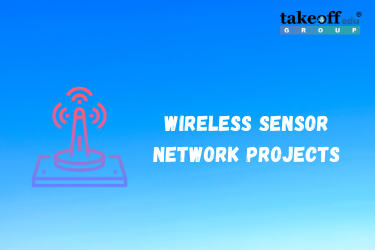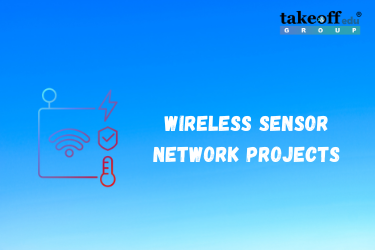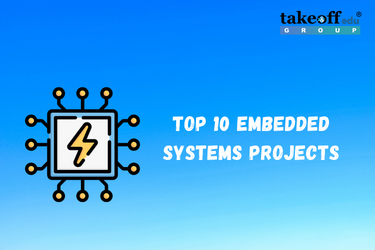A set of sensor nodes cooperating for certain activities is referred to as a WSN (i.e., Wireless Sensor Network). Wireless connections are used by every sensor to transmit data. A sensor node specifically carries out sensing and transmitting tasks. It primarily keeps an eye on environmental factors like sound, temperature, etc. It then sends the info to distant consumers.
The top 7 WSN projects for students to learn from and put their talents to the test are as follows:
1. Low power Smart Vehicle Tracking, Monitoring, Collision avoidance and Antitheft System
By aiding with Fleet Management, Vehicle Security, and Safety, this project offers a system that effectively and efficiently delivers an Internet of Things application in the transportation industry. Technology only succeeds when it reaches every socioeconomic level.
This article proposes a vehicle tracking and anti-theft system that operates just utilising GSM-GPS and open source technology, making it the cheapest solution for Fleet Management, safety, and security in comparison to the several pricey GPS tracking systems that are currently on the market.
Your research career will be intelligently monitored and reshaped by Wireless Sensor Network Projects. The basic processes in WSNs like network construction, sensing, data transmission is important for the implementation in projects for solving real life problems and also for the success of the project.
Based on LoRa wireless technology, this project suggests a low-power agricultural environment detecting system. ZigBee, Wi-Fi, and GPRS traditional wireless sensing technology has a short transmission distance and signal interference in greenhouse environment monitoring systems such as large farms. This is due to the current intelligent agriculture's collection and processing of production site data and the control requirements of related equipment.
To fully identify soil, model environmental conditions, regulate lighting, irrigation, cooling, and man-machine interfaces, this model may make use of numerous sensors in the lab.
Your research career will be intelligently monitored and reshaped by Wireless Sensor Network Projects. The basic processes in WSNs like network construction, sensing, data transmission is important for the implementation in projects for solving real life problems and also for the success of the project.
Must Read: List of WSN Based Project Titles
The traditional traffic signal system is based on a set time concept that is assigned to either side of the junction and cannot be adjusted to account for changes in traffic density. When there are more cars waiting on the same route, the priority of the traffic signal has to be adjusted. When the junction's traffic density is detected, the signal automatically adjusts.
IR sensors and Arduino RFID were used to create the prototype model. Due to its simplicity and affordability, we utilise Arduino to build code that meets our criteria, and IR sensors are used to measure the volume of traffic on a certain road. There may be restrictions on the ability of IR sensors to function in normal lighting. As a result, traffic lights function incorrectly.
Your research career will be intelligently monitored and reshaped by Wireless Sensor Network Projects. The basic processes in WSNs like network construction, sensing, data transmission is important for the implementation in projects for solving real life problems and also for the success of the project.
4. Energy-Efficient Resource Allocation in Wireless Energy Harvesting Sensor Networks
The energy harvesting in WSN is the major focus of this research. Recently, an approach to solve the aforementioned issue has been presented using EH (i.e., Energy Harvesting) sensors. These sensors' extended lifespans are the consequence of their ability to capture the energy they need from the environment in various ways.
We investigate a WEHSN (i.e., Wireless Energy Harvesting Sensor Network) based on TDMA, where the time slot is comprised of two-time intervals. Energy is absorbed in the first-time interval whereas the data is transmitted from the sensors in the second time interval.
Your research career will be intelligently monitored and reshaped by Wireless Sensor Network Projects. The basic processes in WSNs like network construction, sensing, data transmission is important for the implementation in projects for solving real life problems and also for the success of the project.
Also Try: Wireless Sensor Network Projects
5. Smart Door Using Biometric NFC Band and OTP Based Methods
With the use of biometric, NFC band, and OTP authentication mechanisms, this concept provides a novel design for a smart door that would enable safe and convenient entrance to our homes.
By lowering the time required for authentication using a biometric fingerprint sensor and adding an additional layer of security by employing a local server to create OTP authentication, our approach offers the chance to address the problems these systems encounter. Compared to previous methodologies, this implementation has produced better outcomes and a greater performance rate.
Your research career will be intelligently monitored and reshaped by Wireless Sensor Network Projects. The basic processes in WSNs like network construction, sensing, data transmission is important for the implementation in projects for solving real life problems and also for the success of the project.
6. Energy-Neutral Wireless Sensor Network Based on SWIPT in Wireless Powered Communication Networks
A unique ENO framework is provided in this work. A WSN deployed in a wireless powered communication network is taken into consideration for ENO (i.e., Energy-Neutral Operation) of WSN (i.e., Wireless Sensor Networks).
In this network, sensor nodes with excellent energy harvesting and strong connection budgets still have energy after transmitting their data to the cluster head (CH), but the CH experiences energy shortage.
As a result, the work employs the SWIPT (i.e., Simultaneous Wireless Information and Power Transfer) approach so that the sensor nodes may cooperatively send data while transferring their remaining energy to the CH.
Your research career will be intelligently monitored and reshaped by Wireless Sensor Network Projects. The basic processes in WSNs like network construction, sensing, data transmission is important for the implementation in projects for solving real life problems and also for the success of the project.
7. Real-time Wireless Embedded Electronics for Soldier Security
As part of this project, we have described how to use GPS to track a soldier’s location. We will also be able to keep an eye on vital signs like body temperature and heart rate. In order to inform the control centre of the soldier’s status, the measured parameters will be transferred there with the aid of a GSM module.
When a soldier is hurt, the variations in their heartbeat and pulse rate are recorded, which alerts the military base station and allows us to find them using GPS.
With the help of this data, we can organise the next battle with an accurate count of soldiers who are unhurt while simultaneously supplying the injured soldier with the necessary medical care thanks to the GPS position.
Your research career will be intelligently monitored and reshaped by Wireless Sensor Network Projects. The basic processes in WSNs like network construction, sensing, data transmission is important for the implementation in projects for solving real life problems and also for the success of the project.
Know more: Real-time Wireless Embedded Electronics for Soldier Security

 Smart Irrigation with Embedded AI: Digital Farming
Smart Irrigation with Embedded AI: Digital Farming  Designing Smarter Cities: Embedded IoT Systems for Urban Innovation
Designing Smarter Cities: Embedded IoT Systems for Urban Innovation  Top 5 PIC16F77A Projects for Embedded Students
Top 5 PIC16F77A Projects for Embedded Students  Top 7 Arduino Projects for Students
Top 7 Arduino Projects for Students  Top 5 Node MCU Projects
Top 5 Node MCU Projects  Top 5 Raspberry Pi Projects
Top 5 Raspberry Pi Projects  Top 7 ARM7 Project Ideas
Top 7 ARM7 Project Ideas  Top 5 Mechatronics Projects for ECE
Top 5 Mechatronics Projects for ECE  Top 5 Renewable Energy Projects Ideas
Top 5 Renewable Energy Projects Ideas  Top 7 Biomedical Projects for Students
Top 7 Biomedical Projects for Students  Top 7 Artificial Intelligence Project Ideas
Top 7 Artificial Intelligence Project Ideas  Top 7 Machine Learning Projects for BTech & MTech
Top 7 Machine Learning Projects for BTech & MTech  Top 7 Image Processing Projects
Top 7 Image Processing Projects  Top 7 Industrial Automation Projects
Top 7 Industrial Automation Projects  Top 7 Deep Learning Projects for Final Year Students
Top 7 Deep Learning Projects for Final Year Students  Top 7 Robotics Projects for Engineering Students
Top 7 Robotics Projects for Engineering Students  Top 7 IoT Projects for Students
Top 7 IoT Projects for Students  Arduino based Projects for Final Year
Arduino based Projects for Final Year  Embedded Projects for ECE
Embedded Projects for ECE  FPGA Projects for Engineering Students
FPGA Projects for Engineering Students  New Deep Learning Projects Ideas & Topics 2022
New Deep Learning Projects Ideas & Topics 2022  Machine Learning Projects for Final Year CSE
Machine Learning Projects for Final Year CSE  Engineering Projects on Machine Learning
Engineering Projects on Machine Learning  Wireless Sensor Network Projects
Wireless Sensor Network Projects  Wireless Sensor Network Projects with Source Code
Wireless Sensor Network Projects with Source Code  Latest Bio Medical Projects for Students
Latest Bio Medical Projects for Students  Innovative Bio Medical Project Ideas & Topics 2022
Innovative Bio Medical Project Ideas & Topics 2022  21+ Interesting Mini Projects on Robotics
21+ Interesting Mini Projects on Robotics  Engineering Student Projects on Robotics
Engineering Student Projects on Robotics  Innovative IoT Project Ideas for Engineering Students 2022
Innovative IoT Project Ideas for Engineering Students 2022  Latest Mini Projects for ECE Students 2022
Latest Mini Projects for ECE Students 2022  List of Simple Arduino Projects
List of Simple Arduino Projects  Innovative Machine Learning Projects
Innovative Machine Learning Projects  9 Raspberry Pi Final Year Projects
9 Raspberry Pi Final Year Projects  7 Interesting IoT Based Projects
7 Interesting IoT Based Projects  Top 10 Real Time Embedded Systems Projects for Students 2022
Top 10 Real Time Embedded Systems Projects for Students 2022 
 Paper Publishing
Paper Publishing


